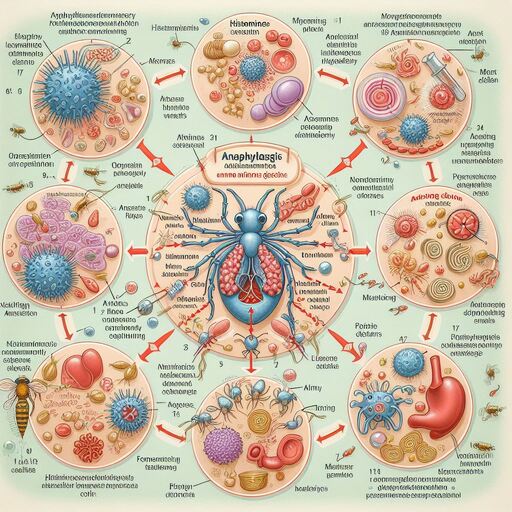Understanding Anaphylaxis Roles and Responses in Allergic Emergencies
Understanding Anaphylaxis Roles and Responses in Allergic Emergencies
Anaphylaxis is a severe and potentially life-threatening allergic reaction that demands rapid recognition and immediate intervention. In this article, we explore the critical role of anaphylaxis, including its causes, symptoms, and the essential steps for effective management.
Causes and Triggers of Anaphylaxis
Anaphylaxis occurs when the immune system overreacts to a specific trigger, typically an allergen to which the individual is hypersensitive. Common allergens that can induce anaphylaxis include certain foods (e.g., peanuts, shellfish, eggs), medications (e.g., penicillin, aspirin), insect stings (e.g., bee venom), and latex. Exposure to these allergens prompts the rapid release of chemicals such as histamine, triggering widespread inflammation and potentially life-threatening symptoms.
Recognizing the Symptoms of Anaphylaxis
The hallmark signs and symptoms of anaphylaxis can develop within minutes to hours of exposure to the allergen. These symptoms may include:
- Difficulty breathing, characterized by wheezing, shortness of breath, or a tight feeling in the chest.
- Swelling of the face, throat, or tongue, which can impair breathing and lead to airway obstruction.
- Rapid heartbeat (palpitations) and a drop in blood pressure, causing dizziness or fainting.
- Gastrointestinal symptoms such as nausea, vomiting, abdominal pain, or diarrhea.
- Skin reactions like hives (urticaria), itching, or flushed skin.
The sudden onset and combination of these symptoms signal the need for immediate medical attention.
The Role of Anaphylaxis Management
Effective management of anaphylaxis hinges on prompt recognition and swift intervention. The primary goals of anaphylaxis management are:
- Early Administration of Epinephrine: Epinephrine (adrenaline) is the cornerstone of anaphylaxis treatment. It rapidly reverses symptoms by constricting blood vessels, relaxing airway muscles, and improving blood circulation. Individuals at risk of anaphylaxis should carry an epinephrine auto-injector (e.g., EpiPen) and be trained to use it promptly at the onset of symptoms.
- Calling for Emergency Medical Assistance: Anaphylaxis is a medical emergency that requires immediate intervention. Call emergency services (e.g., 911) promptly upon recognizing symptoms, even after administering epinephrine.
- Supportive Care: Additional treatments may include supplemental oxygen, intravenous fluids, antihistamines, and corticosteroids to alleviate symptoms and prevent recurrence.
- Post-Episode Management and Prevention: Following an episode of anaphylaxis, individuals should seek follow-up care with an allergist or immunologist to identify the trigger and develop a comprehensive management plan. Prevention strategies involve allergen avoidance, education, and preparedness for future emergencies.
- Understanding Anaphylaxis Roles and Responses in Allergic Emergencies
Empowering Individuals and Communities
Education and awareness play a crucial role in preventing and managing anaphylaxis. Individuals with known allergies, along with their caregivers, should be knowledgeable about potential triggers, recognize early warning signs, and have access to emergency medications and resources.
Furthermore, fostering a supportive and informed community is essential. Schools, workplaces, restaurants, and public spaces can implement allergy-friendly practices, provide training on anaphylaxis response, and maintain emergency protocols to ensure the safety and well-being of individuals at risk.
In conclusion, the role of anaphylaxis management extends beyond immediate treatment; it encompasses proactive prevention, community engagement, and empowerment through education. By raising awareness and fostering preparedness, we can effectively mitigate the impact of anaphylaxis and support individuals in living healthy, safe, and fulfilling lives despite allergies.
Understanding Anaphylaxis Roles and Responses in Allergic Emergencies

